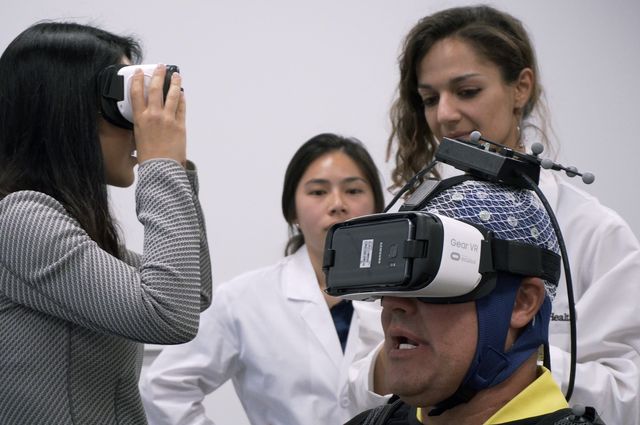Alzheimer’s is one of the hardest diseases to watch someone go through. A slow decline in mental faculties means patients gradually forget who they are and what was around them. As Nanthia Suthana put it: it can feel like we’re cut off from time and from other people. Memories drive much of our interactions with friends. At a fundamental level they help us remember how to do things too. Athletes draw upon memory every time they react to a certain play or make an important move. Some of it is muscle memory, but much of it is subconsciously remembering how to put knowledge into action.
Suthana is a researcher at UCLA who has discovered what happens inside the brain when new memories are formed. She utilized VR, paired with a surgically implanted prosthesis, in order to gain insight into the brain.
How it Works
[youtube https://www.youtube.com/watch?v=sLEC74xcEZ4&w=560&h=315]
The memories that we form everyday correlate with space. Learning how to move along a route in virtual space offers a good litmus test to see how well memory works. Even if a patient is suffering from long-term memory less, most can make these kinds of connections. It also presents an opportunity to compare what happens inside the brain when a patient is able to form new memories, as opposed to a patient forgetting the route.
Suthana wondered if someone suffering from memory loss could move through space and recall the route they took. In VR, patients see a yellow circle that envelopes them as they walk. At certain points, patients stop and orient themselves as instructed. The patient walks the path twice during the course of the test (with and without the markers), while a suit of reflective markers records his or her position in physical space. The team is there to measure the patient’s accuracy, but the prosthesis inside the brain is busy collecting granular data about the patient’s mind.
Suthana and her team monitored the activity from the prosthesis to see what was happening inside the brain as the patient moved in VR. Essentially, that data helps us understand how a patient forms memories.
Implications
Once again, VR shows incredible potential for brain plasticity. We know that patients can learn how to re-wire their brains in some respects using VR. This has incredible applications for full-contact sports, as those are the sports most likely to cause traumatic brain injuries that might result in memory loss over time.
Memory loss is the slow erosion of personality and existence. A person’s quality of life is destroyed once they are unable to make new memories, and when they begin to lose touch with old ones.
This research also reinforces the connection that VR and brain plasticity training share. Future neuroscientists will almost certainly deploy some form of VR therapy when helping patients recover from brain surgery.
Final Thoughts
We’ve written before about how the Gear is being used in pain management, and time and time again we see VR as a tool for brain plasticity. One trend that continues to hold true is that VR costs are coming down and researchers are responding with new and interesting ideas that try and unlock the puzzle of how the brain works.
Athletes have a cause for celebration here too. Sports take a significant toll on the body and mind. VR can help ease the strain that comes with continual practice while boosting the brain’s mental capacity to make new memories. Future brain training may involve this kind of orientation, where our brain is “calibrated” by making some basic memories first to observe how an individual ticks.


